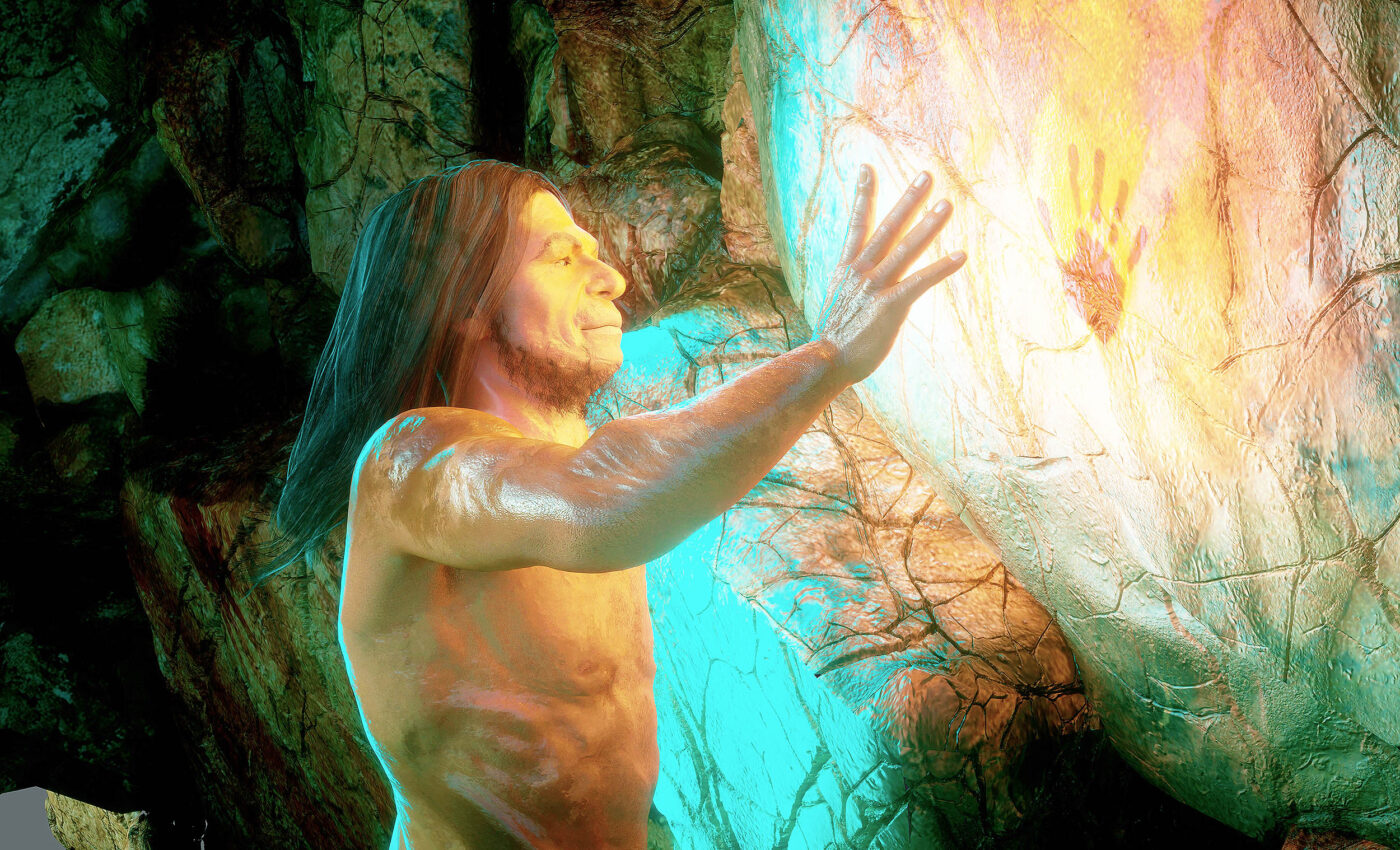
Humans and Neanderthals may actually belong to the same species
A revised interpretation of Neanderthals, traditionally viewed as brutish and intellectually inferior to early modern humans, is emerging due to recent scientific discoveries.
This shift is revitalizing debates among experts about the classification of Neanderthals – whether they should be considered the same species as early modern humans. The reevaluation could profoundly impact our understanding of human evolution and our definition of humanity.
Neanderthal DNA
For a long time, Neanderthals were perceived as primitive, inarticulate beings doomed to extinction about 40,000 years ago, overshadowed by the evolutionary triumph of Homo sapiens. This narrative, however, is being challenged by new findings.
Contrary to earlier beliefs, most people today carry a fraction of Neanderthal DNA. This fact complicates the longstanding view of Neanderthals as a distinct species separate from Homo sapiens.
Ongoing debate
Antoine Balzeau, a paleontologist at the National Museum of Natural History in France, highlights this ongoing debate in the scientific community. “When we were at first discussing the fossils in the 19th century, there was no real debate about specific species or not, simply because at the time, humans were seen as a species but by default,” he told Business Insider.
The discovery of more Neanderthal fossils over time led scientists to question the rigid species boundaries previously established. Despite this, the general consensus until recently was that Neanderthals were distinct from Homo sapiens. The two groups, with lineages diverging around 500,000 years ago, only had brief interactions when Homo sapiens arrived in Europe about 50,000 years ago.
Big game changer
The turning point in this debate came in 2008 with Swedish geneticist Svante Pääbo’s groundbreaking work. He sequenced the Neanderthal genome, demonstrating that most living humans carry about two percent Neanderthal DNA, implying interbreeding between human ancestors and Neanderthals around 50,000 years ago. “It definitely was a big game changer at that point,” said evolutionary anthropologist Laura Buck.
This genetic evidence reopened discussions about the species classification of Neanderthals and humans. The traditional biological definition of species, which asserts that different species cannot produce fertile offspring, is now under scrutiny. Buck points out that this definition is “intuitively attractive because it’s sort of clear cut, but biology isn’t clear cut.”
Distinct physical characteristics
Despite genomic similarities, Buck and others argue that the distinct physical characteristics of Neanderthal bones set them apart from modern humans and their direct ancestors. However, she also notes that people would likely find a Neanderthal’s appearance unusual if encountered today: “I think we’d definitely think they looked a bit weird.”
Balzeau concurs, emphasizing clear anatomical differences between Homo neanderthalensis and Homo sapiens. Conversely, Paul Pettitt, an archaeologist at Durham University, UK, specializing in the Paleolithic era, cautions against using evolutionary divergence as a basis for declaring different species. “It would be guesswork to use that evolutionary divergence to assume that there are different species,” he explained.
Neanderthal sophistication
Recent archaeological finds suggest Neanderthals might have been far more sophisticated than previously thought, challenging the stereotype of them as simple, unrefined beings. Pettitt, who was initially skeptical about Neanderthal sophistication, acknowledges this shift.
“Until, say, 20 years ago, Neanderthal behavior was looked on as fairly stupid, or at least fairly limited, and Homo sapiens were, by contrast, seen as quoting Shakespeare, as they dance across Europe,” he said.
Evidence suggests Neanderthals were adept hunters, made rudimentary jewelry, had a complex lithic industry, and possibly engaged in spiritual practices. This newfound appreciation of Neanderthal culture complicates the narrative of human evolution and our relationship with them.
Broader implications
The question of whether Neanderthals should be considered human extends beyond scientific classification to cultural and ethical considerations. Angela Saini, author of “Superior: the Return of Race Science,” warns of the dangers in misinterpreting Neanderthal genetics, particularly regarding potential discrimination based on the varying percentages of Neanderthal DNA in different populations.
In summary, the evolving understanding of Neanderthals and their relationship with Homo sapiens is reshaping our view of human history. The work of researchers like Pääbo highlights the exceptional nature of modern humans, prompting reflection on how we might perceive Neanderthals and Denisovans if they had survived alongside us.
“Had Neanderthals and Denisovans survived, how would we deal with that today? … Would we experience even worse racism against them than what we experience among us today – because they were in some respects really different – or could we think differently and say if we had them here today, we would not just have one type of humans?” said Pääbo. This ongoing research and debate continue to challenge and refine our understanding of humanity’s past.
Like what you read? Subscribe to our newsletter for engaging articles, exclusive content, and the latest updates.
—-
Check us out on EarthSnap, a free app brought to you by Eric Ralls and Earth.com.













